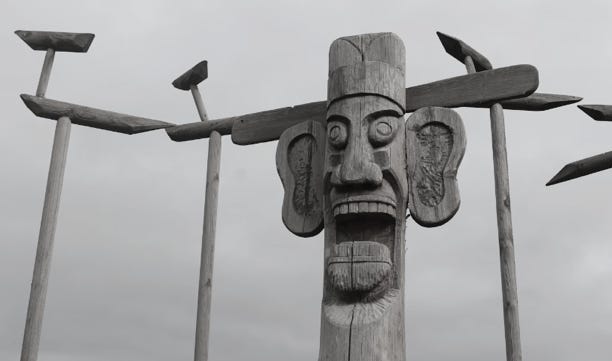Why We Love AI Influencer Bots
AI influencers, chatbots, virtual humans. They’re hugely popular? Why this is goes back thousands of years.
The people gathered in the outer temple room. The room flickering from the light of burning tapers in wall sconces. The air thick with incense. Tonight the oracle would speak and her prophecies would carry across the land. The Pythia of Delphi was lit, moving. Her arms twitched and her mouth opened, her yes glowed.
Today, millions of people around the world await the words of Lil Miquela or sway to her songs on Youtube, sharing her words and content, building community around her. She is worth an estimated $125 Million. She is an AI influencer, a bot, a virtual human and she is not real. But then, neither was the Pythia of Delphi thousands of years ago.
Some of the major oracles actually did move and were guided by priests and temple workers from behind the scenes ropes and gears. They would use ventriloquism to project the voice of the oracle. Today, that is all done by machines and LLMs act as the voice.
While AI influencer bots may seem like something new, they’re part of ancient human history going back many thousands of years. They’re in effect, the totems of the digital age. Long have humans practiced some form of conscious devotion to artificial beings.
Perhaps the biggest difference today however, is that traditional totems evolved from bottom-up community and cultural practices. Today, AI totems are most generated by corporations in a top-down manner. A shift in power dynamics, even when most consumers know these AI totems are created for commercial purposes.
In the marketing world, the common term today is not AI influencer or bot, but rather “virtual humans” and they’re not just for corporate brands. They’re seen in the sports world, virtual world gaming and online games as well as music groups and artists.
If an AI totem (bot), becomes successful (such as Lil Miquela, Lu do Magalu and others) they find their way into communities when they’re essentially “reclaimed” by the community who creates memes, fan art and discussions. What we would call in anthropology terms “social creativity” so that the AI totem transcends the original corporate intent.
For the brands that create these AI totems (influencers) this can do wonders for brand awareness and to engage more deeply with a target audience. The risk for a brand however, is if the wizards behind the curtains who control the budgets, pull the funding. This can then anger their audience who’s formed parasocial attachments to the brand.
Parasocial relationships are another key aspect not just of AI totems but we form them with real-world people as well. Taylor Swift has her “swifties” and Beyonce has her BeyHive. The Grateful Dead band had what were called “Deadheads.”
So why do we form these parasocial relationships and why are totems so powerful in the human psyche? Anthropologist Margaret Mead observed in her studies of various cultures that we often have a desire to create meaningful relationships because they give us a collective meaning and purpose. They are a collective investment in a shared reality.
More ancient totems often acted as a mediator between the real and spiritual worlds, whereas modern AI totems mediate between the physical and digital worlds. Traditional totems helped with social organisation and community relationships (kinship systems) whereas AI totems are more representative of cultural and social significances.
Perhaps then, AI totems, AI influencers, virtual humans, aren’t successful despite their nature, but rather, because of it. This is a human adaptation to traditional, real-world social bonding mechanisms in a new context of the digital world.
Traditional totems often involved rituals such as ceremonies with chanting and danced. With AI digital totems, the new rituals are that of sharing, commenting, discussing and creating digital assets such as songs, poetry and memes.
Really well designed and maintained AI totems represent a sort of “perfect imperfection” where they’re flawed in just the right ways so they seem relatable yet still maintain aspirational qualities. For many people AI influencers (totems), are also seen as safer than real-life humans as they’re managed through a more controlled idea of predictability. Changes and shifts are carefully curated by the brand or creators who analyse the culture around the AI totem. Unlike celebrities who go off the rails or have breakdowns, AI totems don’t. Well, not yet anyway.
For a long time, many have suggested that technology will become dehumanising, and in the way we see social media leading to more loneliness, this is partly true. What’s more interesting is that humans, through AI totems as AI influencers, are adapting an ancient behavioural element social bonding to new technological contexts. Humans have always been remarkably adaptive and curious about new forms of social behaviours and practices.
Perhaps in some ways, this adoption of and engagement with AI totems represents a kind of honest dishonesty that people find somewhat refreshing? In some ways AI totems tap into a deeper human need for connection and narrative continuity?
In the coming year, we are likely to see more brands create AI totems to try and build more engagement with their customers. Some will succeed, some will fail. Too, as we see the arrival of personalised AI agents, understanding our millennia old relationship to totems will help us understand why we like them. And why they’ll be successful as a mediator between our physical and digital worlds.



